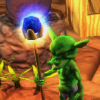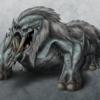Okay, so I guess the word is a "mercator projection" and this link is perfect! I was actually trying to put a loop closer to the pole just to minimize the artifacts at the top, but I couldn't get it to work. I will update with a picture:
http://blender.stackexchange.com/questions/3315/how-to-get-perfect-uv-sphere-mercator-projection
Edit: I am getting a flat unwrap, but I am still getting a seam, but that is mainly because the images I am using are not seamless. So I guess this helps with the dome at least, perhaps this "follow active quads" feature of Blender will help a little.
By the way, I started with a full sphere, and after I followed the steps in the link above, I deleted the bottom half of the sphere.













